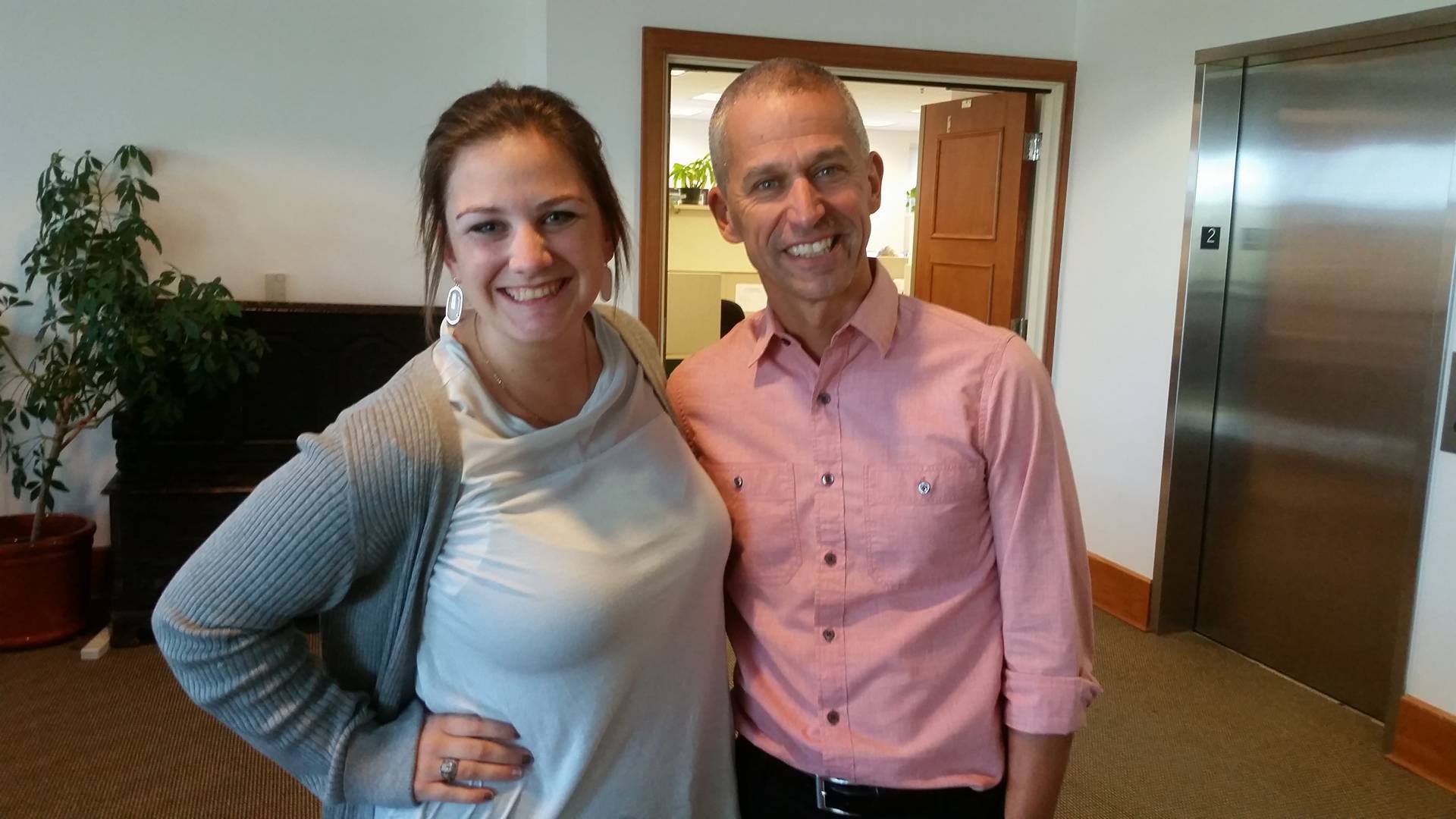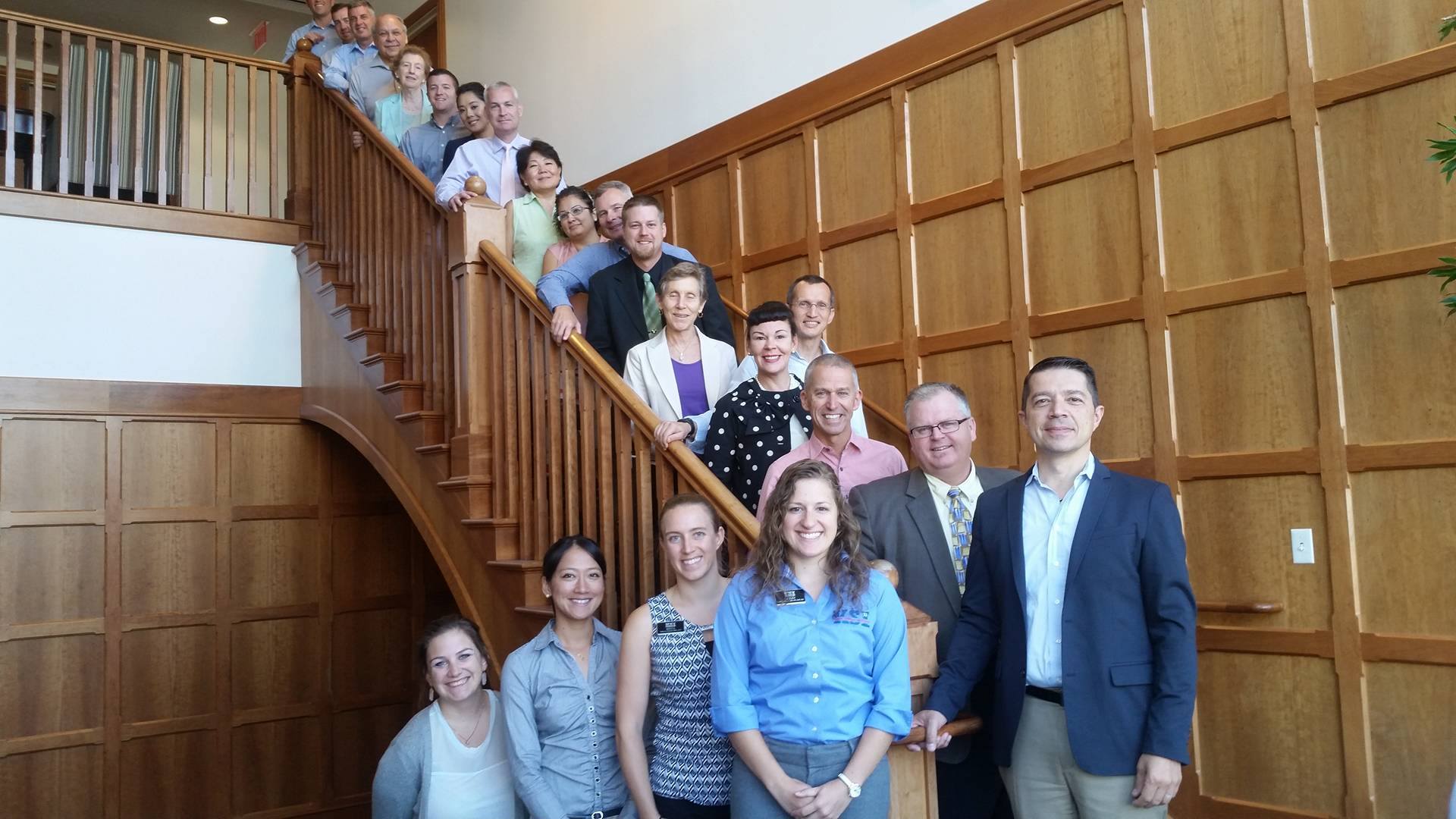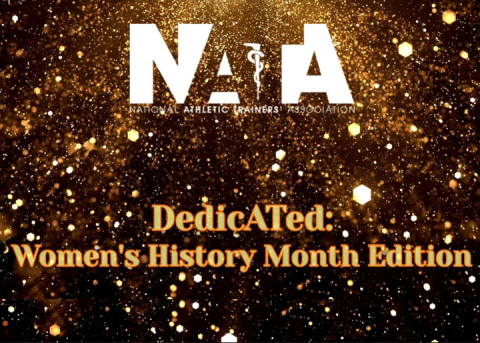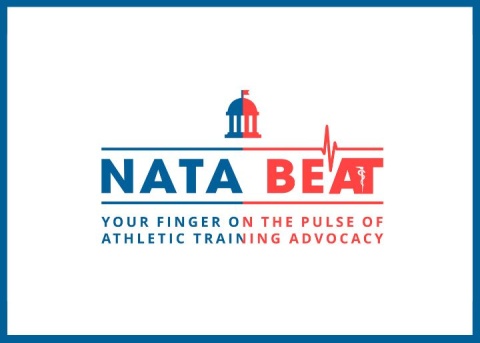
 By Katie Scott, MS, ATC, LAT
By Katie Scott, MS, ATC, LAT
NATA Athletic Trainer in Residence
Having been the athletic trainer in residence at NATA for almost five months, one of the perks of my position is having the opportunity and privilege to network with some of the United States’ and world’s leading researchers and clinicians.
For me, it’s motivating to see athletic trainers work on groundbreaking research that will continue to provide evidence-based practices and improve the gold standard care ATs are already capable of providing. I’ve also had opportunity to educate those who have never heard of athletic training before and are interested to see how our professions can collaborate to provide quality care to our patient population. One of these networking opportunities was the Malignant Hyperthermia Task Force Roundtable hosted by the University of Connecticut in September.
The Korey Stringer Institute (KSI) and NATA co-hosted a variety of researchers from around the world to discuss the emerging issue of malignant hyperthermia (MH) in the physically active population. The organizations represented included the Malignant Hyperthermia Association of the United States (MHAUS), Uniformed Services University of the Health Sciences (USUHS), Toronto General Research Institute, Laveran Military Teaching Hospital, Central Michigan University and University of Arkansas.

During the meeting, the group explored the links between MH and medical conditions seen in exercising individuals, focusing specifically on exertional heat stroke (EHS) and exercise induced rhabdomyolysis (EIR). The goal of the roundtable was to identify future directions of research in the identification, prevention and treatment of conditions associated with MH in active individuals.
Sitting in the roundtable and listening to these experts discuss their current and future research that directly impact athletic trainers was both interesting and overwhelming. Personally, until this meeting, I never heard of MH occurring outside of the post-operative anesthesia world of medicine. I also was learning about many of these other professional organizations – experts in fields of which I knew so little – for the first time. I was intrigued to learn more about these organizations as well as explore the current knowledge base of athletic trainers pertaining to MH.
So, what is MH exactly?
“Malignant hyperthermia is a rare anesthetic induced genetic disorder of skeletal muscle that can be triggered by inhalational anesthesia or muscle relaxants (such as succinylcholine),” said Yuri Hosokawa, MAT, ATC, director of communication and education at KSI, and chair of the MH taskforce. “When the genetically susceptible individual is exposed to these triggers, it causes calcium ions to enter the muscle cells at an uncontrollable rate, creating involuntary muscular contractions, resulting in rigidity, hyper-metabolism, skeletal muscle damage and hyperthermia.”

While first thought to only occur in the operative setting, case studies and research have indicated a potential link between MH and risk of EHS in the physically active population. According to a 2013 article by Thomas and Crowhurst, the evidence suggests that a MH-like syndrome may occur in individuals with MH-related genetic mutations during exertion. Hosokawa said since her current line of research is focused on contributing factors for EHS, exploring the potential role of how genetics may influence risk of EHS was of interest to her.
Dr. John Capacchione of USUHS and Dr. Henry Rosenberg, president of MHAUS, have significant research published on MH as well as the potential link between MH and risk of EHS and/or EIR in the physically active population. When asked for their suggestion on the message to relay to ATs, both resounded with the need for education and awareness of the condition, including the signs and symptoms of MH susceptibility and current treatment courses for the crisis.
I had the opportunity to sit with Rosenberg and learn more about MHAUS, a nonprofit organization dedicated to patient safety. He said the mission of MHAUS is to, “promote optimum care and understanding of MH and related disorders.” MHAUS was formed in 1981 by patients affected by MH who felt there was an urgent need to reduce morbidity and mortality from the disorder. This prevention initiative includes educational materials and a 24/7 hotline specific to MH crisis. The hotline is staffed by volunteer experts who provide direct advice to clinicians in managing a suspected MH crisis. MHAUS also provides periodic conferences during which MH experts share their latest information with clinicians and patients.

So, how does all this affect athletic trainers?
“If, after future research, there is a direct link between MH and exertion-related illnesses in the heat, I foresee questions regarding MH susceptibility be included in athlete’s pre-participation exams,” Hosokawa said. “The extent of the impact that MH susceptibility may have on increased risk of EHS and EIR are still unknown; however, identification of potential risks will allow clinicians to take precautionary measures, such as avoiding the use of succinylcholine during surgery or having cold-water immersion available to minimize the subsequent organ and tissue damage.”
Yuri and I also discussed potential MH screening procedures to be used in the sports medicine setting. Because the current gold standard for MH screening requires a muscle biopsy, its costly price tag combined with its invasive tendency limits its application as a mandated screening tool.
“The most practical screening method is taking personal and family history of any adverse events with anesthesia and/or recurrent episodes of EHS or EIR,” Hosokawa said, “There are some cases where patients with recurrent episodes of EHS and EIR were found with the genetic mutations related to MH.
“Although the genetic link between MH, EHS and EIR are currently inconclusive, it brings a point of discussion in integrating genetic findings to personalized medicine in sports medicine practice. Interpretation of genetic screening warrants careful clinical decisions, and should not be handled lightly if the next course of action is not identified (i.e., proper management, prevention and treatment). However, medicine is making progress in enhancing genetic-based personalized medicine, and it is only a matter of time until we encounter situations where ATs and sports medicine physicians are asked to make clinical decisions based on genetic predispositions and not just with clinical symptoms alone.”
NATA is currently conducting a survey on athletic trainers’ knowledge of MH at www.surveymonkey.com/r/MalignantHyperthermia. This is my official call to action for everyone reading this to complete their survey!
I want to thank NATA and KSI as well as Dr. Douglas Casa, Hosokawa, Capacchione and Rosenberg for their time and allowing me the opportunity to be part of this first-of-its-kind meeting. More details regarding the results of this roundtable will be published in the Journal of Athletic Training in 2016.
For more information about MHAUS and its educational opportunities, visit www.mhaus.org.





